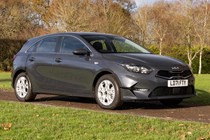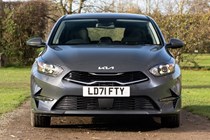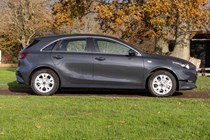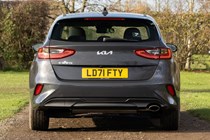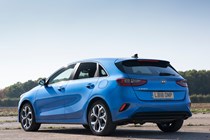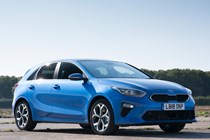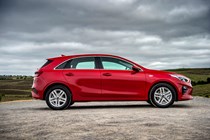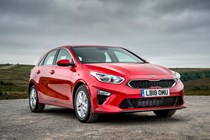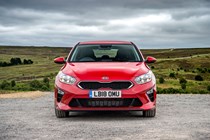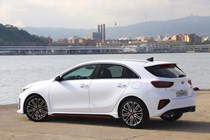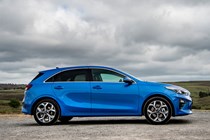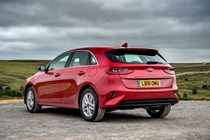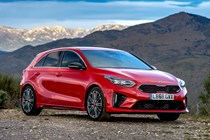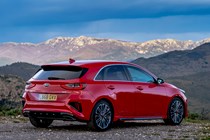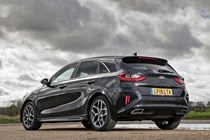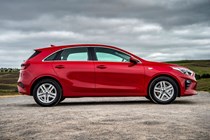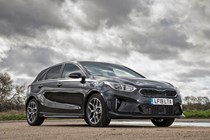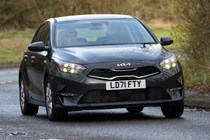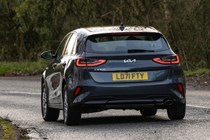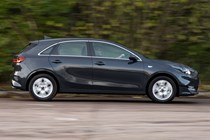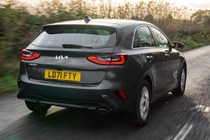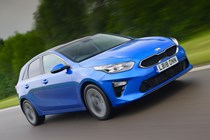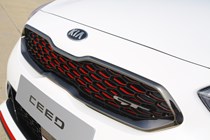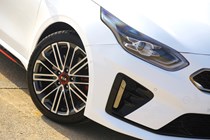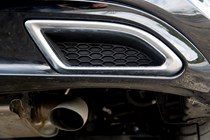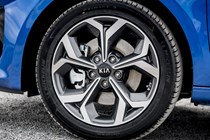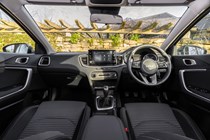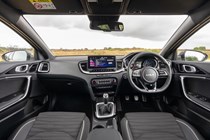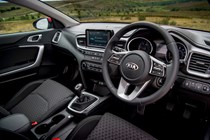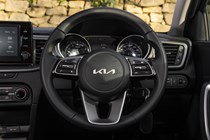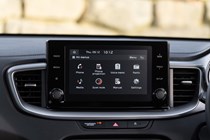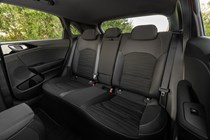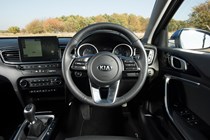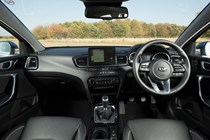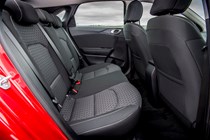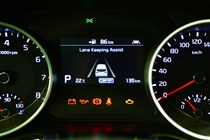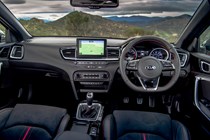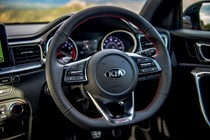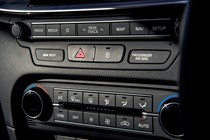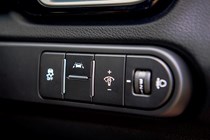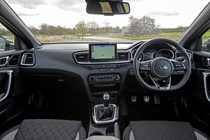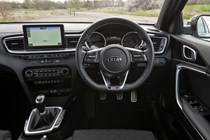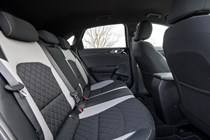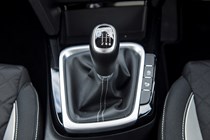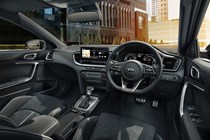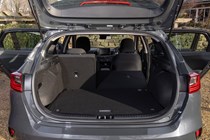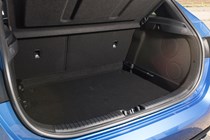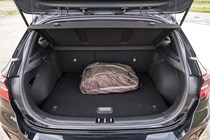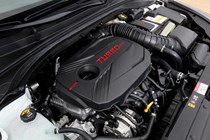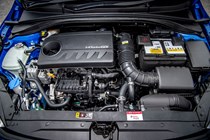Kia Ceed engines, drive and performance
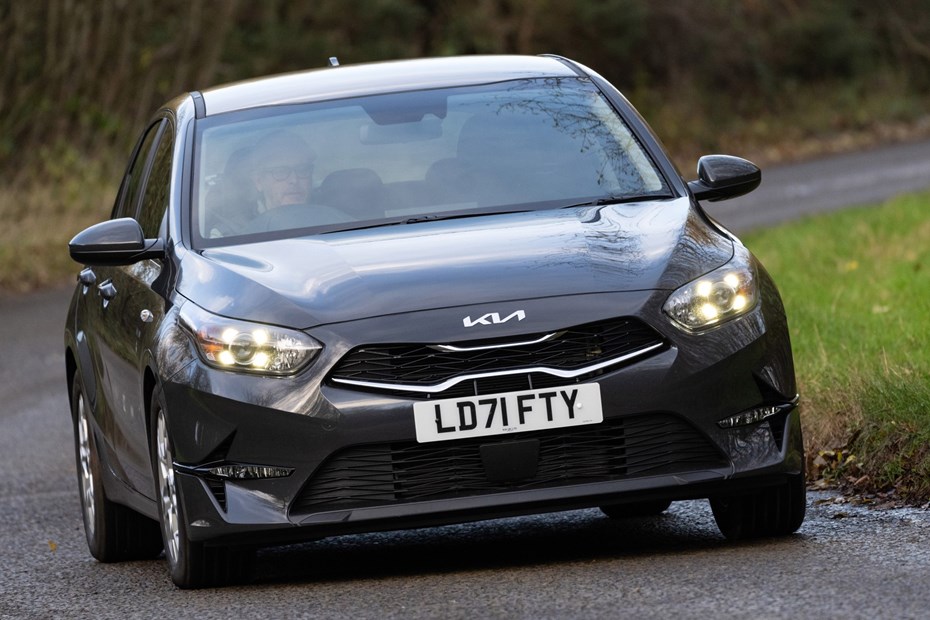
- Two petrol and one diesel available
- No hot hatch or hybrid offerings
- Ceed isn’t at all bad to drive
Petrol engines
The Ceed’s two petrol engines cover most of the bases. For most people, the 1.0-litre provides ample performance – it’s relaxed on the motorway and has enough pull around town. However, it’s also quite noisy under load and needs to be worked hard, which can spoil fuel economy. It’s also only available with a six-speed manual gearbox, though this has quite a nice action.
The 1.5-litre unit has much more power making it more suitable if you tend to do a lot of fast cruising or if you simply like having the extra performance in reserve. It’s not a particularly nice-sounding engine, but you won’t need to rev it out unless you’re really trying to beat someone away from the lights. It’s also available with an excellent seven-speed automatic gearbox, which shifts smoothly and doesn’t spoil the Ceed’s fuel economy.
The Ceed hatchback isn’t available with either of the more exciting engine options from the Ceed range – the 1.6-litre turbocharged petrol in ‘GT’ models or the plug-in hybrid offering available for the estate and XCeed.
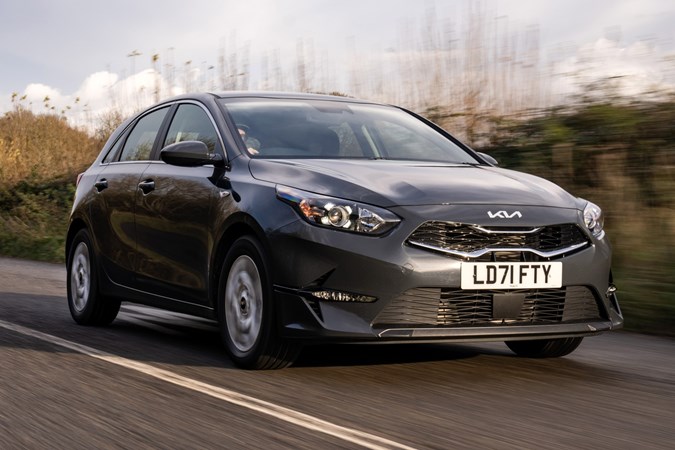
Diesel engines
There’s just one diesel engine available for the Ceed. It’s A 1.6-litre unit with mild-hybrid technology to aid its responsiveness and improve fuel economy. It’s not as smooth or refined as the best diesel engines such as the Volkswagen Golf’s 2.0 TDI, but it’s a good option if you want the best fuel economy from your Ceed. Just bear in mind it’s significantly pricier than the petrol engines to buy.
The diesel gets a rather interesting six-speed manual gearbox that doesn’t have a physical link between the clutch and the clutch pedal – this iMT (Intelligent Manual Transmission) works with the mild-hybrid system to shut the engine off when coasting, further saving fuel. It’s not the easiest to get to grips with, however, as the clutch biting point is artificial and difficult to modulate. The seven-speed automatic is also available, but only on top-spec cars.
Find full engine details on the Kia Ceed specs page
What’s it like to drive?
- Ceed handles far better than predecessor
- Not particularly exciting to drive…
- … but competent and comfortable

Driving dynamics aren’t a typical Kia strong point but the Ceed is an exception to that rule. Thanks in no small part to fully independent front and rear suspension as well as being relatively low and wide, the Ceed actually handles corners very well.
Composed when cornering with very well-contained body roll, the Ceed can be quite enjoyable on a twisting B-road. It does tend to isolate the driver from the experience though, thanks to a highly-assisted brake pedal and steering that’s completely remote from what the front wheels are doing. This impression’s heightened in models with the iMT transmission.
It lacks the last degree of driver involvement that makes the Mazda 3 or Ford Focus so much fun.
The suspension’s been tuned for a nice balance between comfort and handling, though, and the Ceed deals with pockmarked European roads very well. It can feel firm in places but it’s never harsh, and the lack of uncontrolled body movement is actually preferable for passengers who won’t suffer car-sickness so easily.


